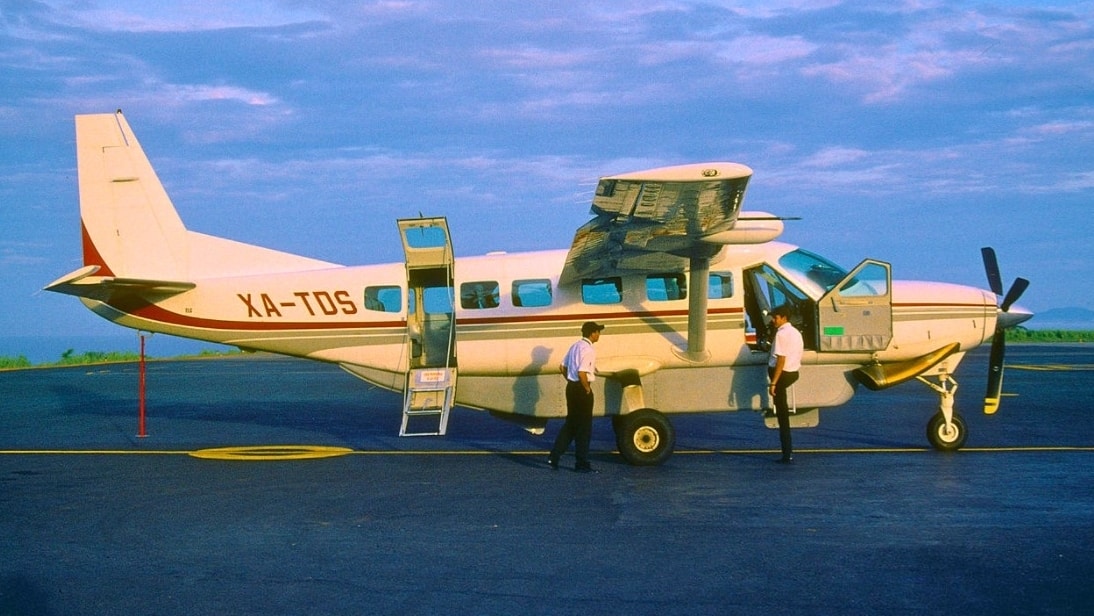
A Cessna 208B Caravan pilot fell asleep mid-air for 40 minutes due to “inadequate sleep the night before” and hypoxia triggered by the aircraft’s oxygen system.
An extraordinary ATSB investigation has even revealed a separate Royal Flying Doctor Service King Air was tasked with trying to wake the pilot up by approaching close and dipping its wings to trigger the first aircraft’s collision alert system.
The incident took place on 2 July 2020 as the pilot was conducting a ferry flight from Cairns, Queensland to Redcliffe.
The ATSB’s acting transport safety director, Kerri Hughes, said the hypoxia alone was unlikely to have solely caused the incident, which was due to a combination of “fatigue and mild hypoxia, possibly exacerbated by dehydration and diet”.
The investigation reveals how the pilot was conducting a ferry flight of a Cessna 208B Caravan aircraft from Cairns, Queensland to Redcliffe on the afternoon of 2 July 2020.
While cruising at 10,000 feet the pilot encountered unforecast icing conditions and poor visibility due to cloud and climbed to 11,000 feet and began using the aircraft’s supplemental oxygen system intermittently. (Pilots are required to continuously use supplemental oxygen when flying unpressurised aircraft, such as the Caravan, when flying above 10,000 feet.)
When the aircraft was about 53 km west-north-west of Sunshine Coast Airport, air traffic control (ATC) unsuccessfully attempted to contact the pilot regarding their planned descent into Redcliffe, the investigation notes.
Following repeated calls to the pilot, ATC enlisted the assistance of pilots in nearby aircraft to contact the Caravan pilot, who was seen to overfly Redcliffe and track towards Brisbane.
The pilot of a Royal Flying Doctor Service Beechcraft B200 King Air aircraft departing Brisbane was asked by ATC to intercept and contact the Caravan pilot, but their initial efforts were unsuccessful. The King Air pilot then dipped their wings and approached the Cessna in an attempt to trigger its traffic alert and collision system (TCAS), but the pilot remained unresponsive.
At 5:35 pm, after 40 minutes without contact and when the aircraft was about 111 km south-south-east of the intended destination, the pilot woke and ATC communications were re-established.
Air traffic control reported that the pilot sounded ‘groggy’ and ‘not really with it’ upon first contact and took a few minutes before slowly commencing the descent to 8,000 ft.
Upon changing frequencies, ATC instructed the pilot to land at Gold Coast Airport. The pilot accepted the instruction at first, but then later advised that they would prefer to continue to Redcliffe instead. Air traffic control reiterated that, given the situation it would be better for the pilot to land at the Gold Coast as there was runway lighting and emergency services available.
The pilot accepted the instruction and tracked to the Gold Coast, while the B200 pilot continued to follow and monitor the aircraft. Air traffic control reported that the pilot continued to sound ‘groggy’, but gradually improved on approach to land.
The aircraft was landed safely at 18:01pm and the pilot was attended to by the Gold Coast aircraft rescue and firefighting officers and the aerodrome safety officer. The officers conducted a visual observation of the pilot. The pilot, who reported falling asleep, declined first aid and an ambulance.
“The ATSB found that the pilot was likely experiencing a level of fatigue due to inadequate sleep the night before and leading up to the incident,” Hughes said.
“Further, operating at 11,000 feet with intermittent use of supplemental oxygen likely resulted in the pilot experiencing mild hypoxia. This likely exacerbated the pilot’s existing fatigue and contributed to the pilot falling asleep.”

Ms Hughes said most people generally underestimate their level of fatigue and tend to overestimate their abilities.
“This incident emphasises the importance of pilots monitoring their own health and wellbeing, to ensure that they are well-rested and adequately nourished, especially when conducting single pilot operations.”
Ms Hughes said the investigation carefully considered the role of hypoxia in the incident.
“Although a common symptom of hypoxia is loss of consciousness, it is not typical for someone experiencing hypoxia to regain consciousness, while still operating at the same altitude and without additional oxygen,” she said.
“Therefore, from the information obtained by a medical specialist engaged by the ATSB and from studies conducted on mild hypoxia at moderate altitudes, the ATSB determined that it was unlikely that the pilot had lost consciousness solely due to mild hypoxia.
“Rather, the pilot had fallen asleep likely due to a combination of fatigue and mild hypoxia, possibly exacerbated by dehydration and diet.”















